Renowned photojournalist and Magnum photographer Bruce Davidson has been acclaimed for over half a century for his searing images of street gangs, circus performers and the civil rights struggles of the 1960s, all captured with a remarkable directness, truth and power that transcends the concept of style. A friend of the legendary Henri Cartier-Bresson and a leading proponent of the classic black and white tradition of reportage, Davidson continues to evolve as an artist, recently embracing landscape photography and publishing a book of the color images he’s created over the years. His latest project on New York is still evolving, but he will definitely shoot it with a digital Leica in black and white and with a 28mm lens. To gain a deeper understanding of the influences that shaped his long and illustrious career and how he sees his photographic mission going forward, we interviewed him at length. Here, in his own words, are Bruce Davidson’s forthcoming, charming and revealing insights into who he is, what he’s done, and where he’s going.
Q: Why do you like the Leica so much and why is it a great tool for what you do?
A: For me, the things that define the Leica mystique are that it’s small, it’s relatively light, quiet and unobtrusive. Modern reflexes look like sneakers; they don’t look like cameras. They look like something else from another world. That’s why I’ve always had Leicas in my life. For example, right now I’m thinking about doing something where I want to walk around. I want to be very invisible and not aggressive in any way. That means quiet and that means Leica.
Q: What’s this new project that you have in mind for New York?
A: It’s hard to talk about something you haven’t done, but all I can say is it will work for me to have a digital Leica, in black and white, with a 28 mm lens. That’s all I need. The rest is magic.
Q: You’re always drawn to long-term documentation projects. What’s the attraction?
A: I feel that my work has a cumulative effect. I’m kind of like a serial killer. It takes me a long time before I understand what I’m looking at. It can take months. And also, you have to pay your dues. In other words, if you’ve entered someone’s life, you have to live there for a while. So most of my bodies of work from the circus photographs in 1958, the Brooklyn gangs and even the civil rights movement, the Leica worked because it’s quiet, mobile and has excellent optics. I remember during the civil rights movement, when I wasn’t sponsored, but on a fellowship, something happened to my Leica and I called Marty Forscher, the Leica repairman for all the professional photographers. He talked me through it and I fixed the camera myself on the road — which was pretty amazing.
Q: Can you share the story of…
A: I’d like to back up to the question “when did Leica come into your life?” It came into my life when I was a student at the Rochester Institute of Technology (RIT). At that time, in the early 1950s, there were 140 students in the photography department, including two women. Of course, I was smitten by one of them and I was trying to court her. I met her at the women’s dorm in the living room sitting on a couch. She said, “I want to show you something.” She ran up to her room and came down with this huge book of photographs called The Decisive Moment, a collection of images by Cartier-Bresson, and we sat together looking through all of the amazing photographs. I had never seen anything like it. She said to me, “I really love this photographer.” So, I said to myself, “If I could take pictures like this guy maybe she will love me too.” So, I went out and spent all my monthly allowance on a used Leica. I actually tried to imitate the imagery of Cartier-Bresson. Of course, it didn’t work. The young female student ran off with a history professor, and I was left with Cartier-Bresson. That’s what started me off. I began to take street photographs.
Q: So how was it meeting Henri Cartier-Bresson when you were in Paris?
A: It all started when I went from RIT to working for Eastman Kodak. I had my own studio at Kodak, but I was bored so I decided to apply to Yale. I got in and took Yosef Albers’ color course. I then was drafted into the military and was sent to the Arizona desert. It was the most remote, isolated camp you could find — 7,000 feet up in the desert. I would hitchhike on weekends to Mexico to photograph bullfighters, and I made friends with Patricia McCormick, a female bullfighter. While thumbing my way from the fort to the Mexican border, I came upon an old guy in a Model T Ford and I stopped him. The town was called Patagonia — really just a post office, a grocery store, a bar and a railroad site. And this old guy took me in and I lived with him on weekends. I forgot about the bullfighting and I just photographed this old couple with my Leica. That was my first full-bodied work and if you look at it closely today, it really predicts the way I would spend my life photographing.
I was then sent to Paris as part of a counter-intelligence group. While there, I met a French soldier who liked photography. We became buddies and he invited me home to his mother’s house in Montmartre for lunch. After lunch I stood by the balcony of this apartment. I was looking down a cobblestone street and saw an elderly woman. I took pictures of her from the balcony. Jean-Pierre, the French soldier, said, “That woman lives above us and she knew Gauguin, Lautrec and Renoir. Her husband is an impressionist painter. She has all her paintings on display.” So, Jean-Pierre introduced me to Madam Foch and I started to spend weekends with her. She spoke perfect English, lucky for me, because my French wasn’t very good. That became the “Widow Montmartre” photographs. When I felt I was finished with that project, I went over to Magnum and they made an appointment for me to see Cartier-Bresson with this body of work…and the rest is history. We really hit it off.
Q: It seems as though you’re really attracted to danger, what with hitchhiking and covering East Harlem, etc. Is that a fair statement?
A: Well, there are two things I’ve never done: I’ve never been under fire in a war and I never learned how to open my eyes underwater. For example, I had a fashion assignment on the beaches of Miami, but there were Portuguese Man O’ War jellyfish so we couldn’t jump into the surf as planned. So the art director said to me, “Bruce, let’s rent a motel pool,” and I said, “That’s a great idea!” He replied, “OK, I’ll rent an underwater camera.” I dove in with this waterproof camera to take pictures of these actors playing with the new fashionable stretch fabric clothing, but I never opened my eyes underwater. When I got out of the water, the actors asked how it looked and I said, “It’s beautiful!” When the pictures were edited, there were headless people — headless children without arms, women with half their heads gone, etc. The art director said, “This is brilliant work. This is superb! How did you do it?” I never told them, to this day, that I had never seen a thing.
Q: Can you share the story about how you discovered the Brooklyn gang?
A: As I remember, there was a gang war going on that was all over the Daily News. I took the subway to Brooklyn, found the group and took color photographs of their wounds and bandages for their lawyers. That started my relationship with them and the rest is history. It was slow going in the winter months, but when they went to Coney Island in the summer, that’s where I took the most pictures.
Q: And how did you get in with them?
A: I think got in with them because I had a Leica. It was small, it was quiet and discrete, and it was simple. I would take pictures of them and then I would bring the pictures back to show them. I didn’t judge them. I wasn’t a social worker. I just photographed the mood of these teenagers — a street gang. More recently, about ten years ago, the leader of the gang looked my wife and I up. We were a little afraid in the beginning, thinking it might have been a shakedown. He would probably be thirty-five to forty years old. Emily, my wife, had been working with him almost ten years. And now, a book was coming out with my pictures of him, the leader, and her writing.
Q: When you were photographing them, what did you do to ensure your safety?
A: I told him, “Look, if I find myself in Prospect Park and there’s a rumble, I won’t call the police, I’ll call the fire department.” I knew that they would respond quicker than the police and would just make lots of noise with their sirens. I didn’t sell them out. They bought that. But I only came close to a rumble once in Coney Island. Mostly it was about these young kids (you could even take away the word “gang”). There is nothing overtly dangerous in those photographs. They didn’t have weapons like gangs have today. I really focused on the way they felt. They were depressed. They were poor. I didn’t know how poor they were, but they were very poor and dysfunctional. The neighborhood didn’t support them in any way. So, that’s what it’s about. I think that’s what makes it universal. It’s about the way teenagers feel if they are abandoned, abused or lost.
Q: You said you’ve been close to a rumble, but has there been any other time in your long-term documentation that you felt threatened — in East Harlem or anywhere else?
A: Not in East Harlem, but in the course of documenting the civil rights movement for Time of Change. I was once arrested in a small town in South Carolina. There was some danger there because I’m a white person and was perceived as an agitator. Also, I was on the freedom ride bus in 1961. The one before ours was burnt and everybody on it had been beaten. I guess I was naïve because I didn’t know how violent the South really was as a white boy from the Midwest. After four or five years of spending time in the South, though, I began to catch on and become sensitized. And that’s why when I photographed one block in East Harlem, I had already paid my dues.
Q: So you had “street cred” by the time you got to East Harlem? How did you get in with that community?
A: I had planned and applied to the Guggenheim fellowship group to photograph youth in America (since I had just photographed a Brooklyn gang). I had already gone on that freedom ride in 1961, which was also youth in America — college-aged people challenging civil rights segregationist laws. That was very dangerous, so one thing led to another. I think I work out of a frame of mind. Things have to come to me, and I have to find some meaning, quest or some knowledge to push me through. Now, I’m photographing landscapes in a certain way that surround Los Angeles. I’m not photographing people. I’m photographing the environment.
Q: It seems as though you are attracted to universal themes. Which theme or body of work is most meaningful for you?
A: Of course they are all my children, but right now, I think back to Jimmy Armstrong, a dwarf in the circus in 1958. I really became close to him. That work was published before, but I also photographed the circus itself and that is being published now. You can see it in Outside Inside, a retrospective body of my work in three volumes. Anyway, I felt close to him and close to the circus. I like circuses. I like the magic that’s created there.
Q: Did you meet any other interesting characters while you were with the circus?
A: Everybody in the circus is a character. I rode with Hugo Zakini and his cannon. The truck he lived in was also the cannon that he was shot out of. I was pretty agile in those days so I climbed to the top of the tent and photographed Clyde Bailey, and the tiger kept looking up at me. I was probably thirty or forty feet from the tiger and that was something new. I’m sure he could smell and see me and he probably wished that I would fall through the canvas…but I didn’t.
Q: We’re really fascinated with your long-term documentation. Since you really immerse yourself, at what point do you find that you are done with the project, or that you really understand what you’re looking at?
A: Sometimes when I look at my pictures I realize that I’ve already photographed that idea, that image, or those colors. Once I begin to see the photographs in that way, it’s sort of at the end. It’s like the end of any affair. It’s painful to move out of the sphere that you were happy with, but somehow you’ve used up all your psychic juices and you have to move on.
Q: What did it mean to you to become a Magnum member?
A: I became a member in 1958. I think Cartier-Bresson sponsored me. It was a very small organization then. Now it’s quite large. There have been a couple of times when the staff at Magnum gave me an idea or paved a way. Sam Holmes, our picture librarian and also and amateur trapeze artist, said to me, “There’s a Clyde Bailey circus in Palisades Park and, what’s different about it is that the tent is white and it’s light inside. It’s not a dark canvas and you’ll be able to photograph it with your little Leica.” And so that’s what I did.
Q: You’ve had the opportunity to have your photographs shown in many different ways, from individual images and books to gallery openings. Is there a certain format that you prefer when showing your photographs?
A: My work is very personal, so I think books fit me best. Over the years I’ve accumulated a number of materials: the civil rights material, the gang materials, etc. All of these bodies of work need to be put into separate books. That’s why I edited and printed it as a three-volume retrospective. It’s not everything; it’s everything in black and white. Now I’m going to be doing a book of all my color photos that people haven’t seen. I always felt like a black and white photographer — you know, kind of classic. Now I’m starting to appreciate the color images that I’ve created over the years. So books, particularly books printed and published by Steidl in Germany, are the way I like my work to be presented. I don’t think I could do it with anyone else — the quality is so good that their reproductions are better than my prints. Well, slightly better…
Q: What would your advice be for any young photographers that are interested in long-term photography projects like those that you’ve done?
A: I find that young people tend to stop too soon. They mimic something they’ve seen, but they don’t stay long enough. If you’re going to photograph anything, you have to spend a long time with it so your subconscious has a chance to bubble to the surface.
Q: Do you have a favorite photograph that you’ve shot?
A: My favorite shot is the one I haven’t taken yet. I guess I’m like a hen; I lay an egg and then I sit on it. What inspires me is the next thing I’m going to be doing. And I don’t know what that is. I want to walk, I want to be very free, and I want have a little Leica. And now, I want to go digital so I don’t have to buy film. I can come back, I can store it, I look at it, and I can edit it. That works for me.
Thank you Bruce!
-Leica Internet Team
To learn more about Bruce, read his full biography at www.magnumphotos.com.
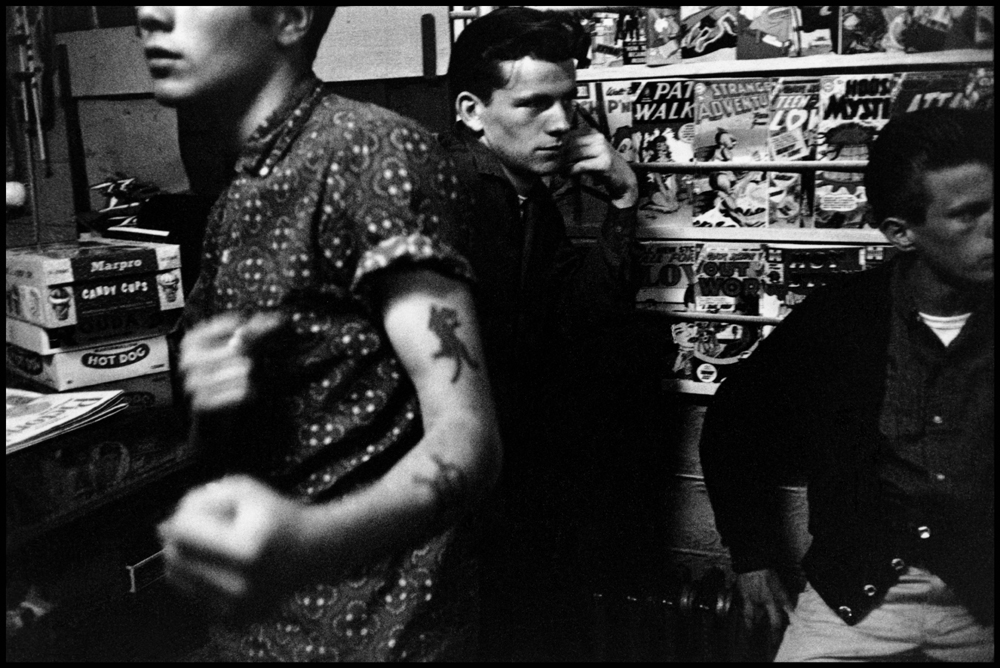
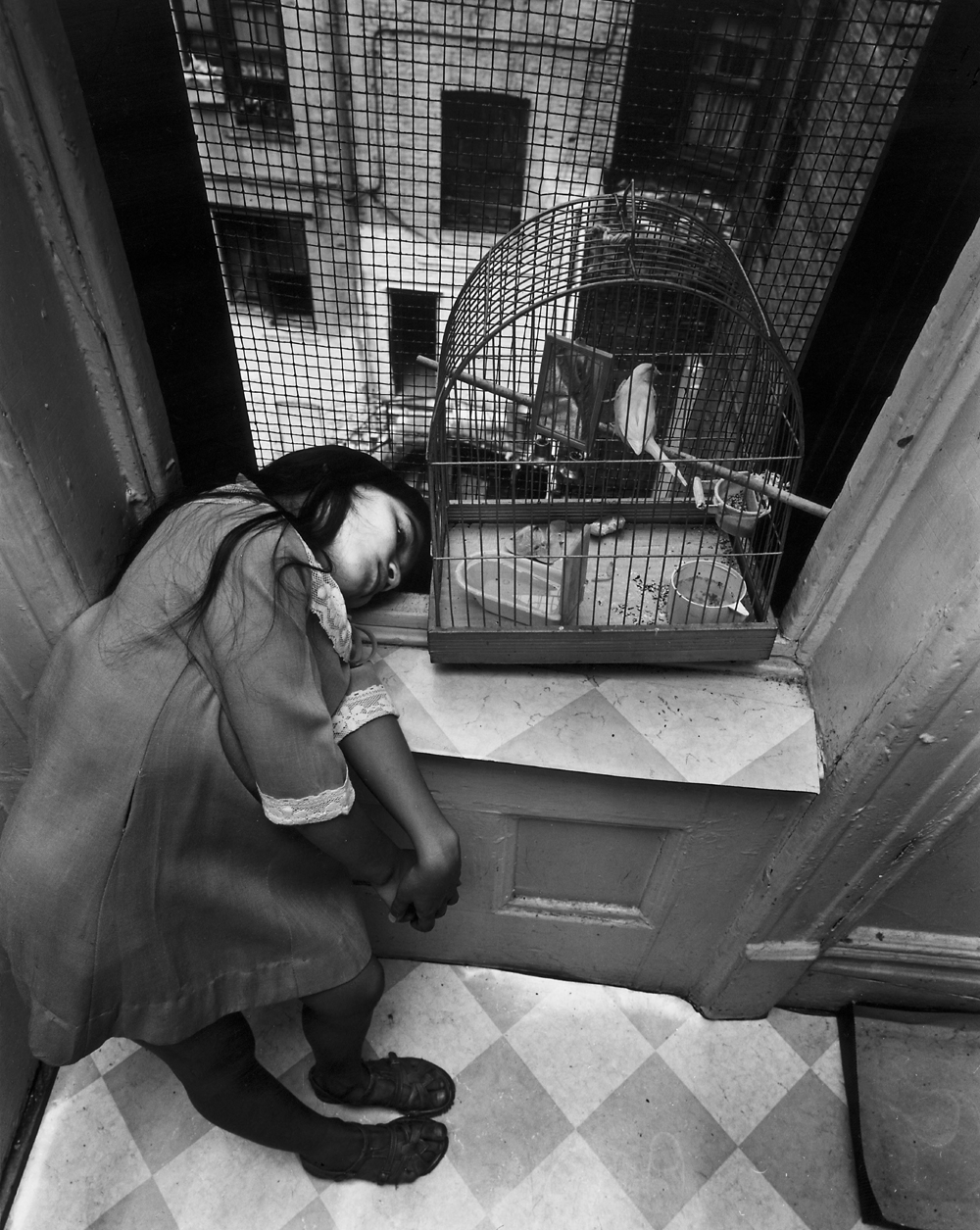
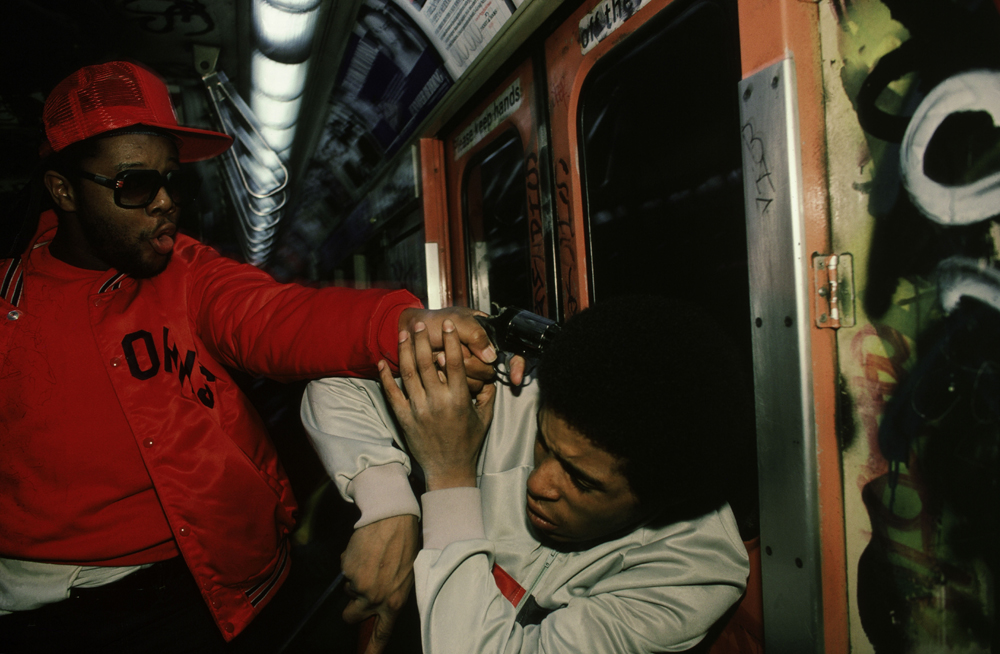
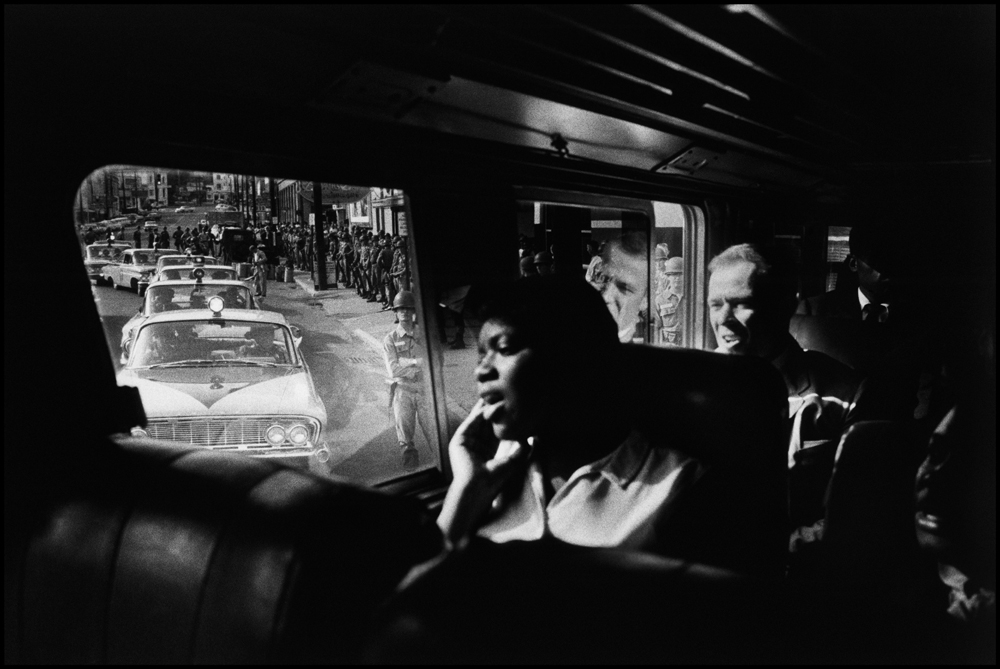

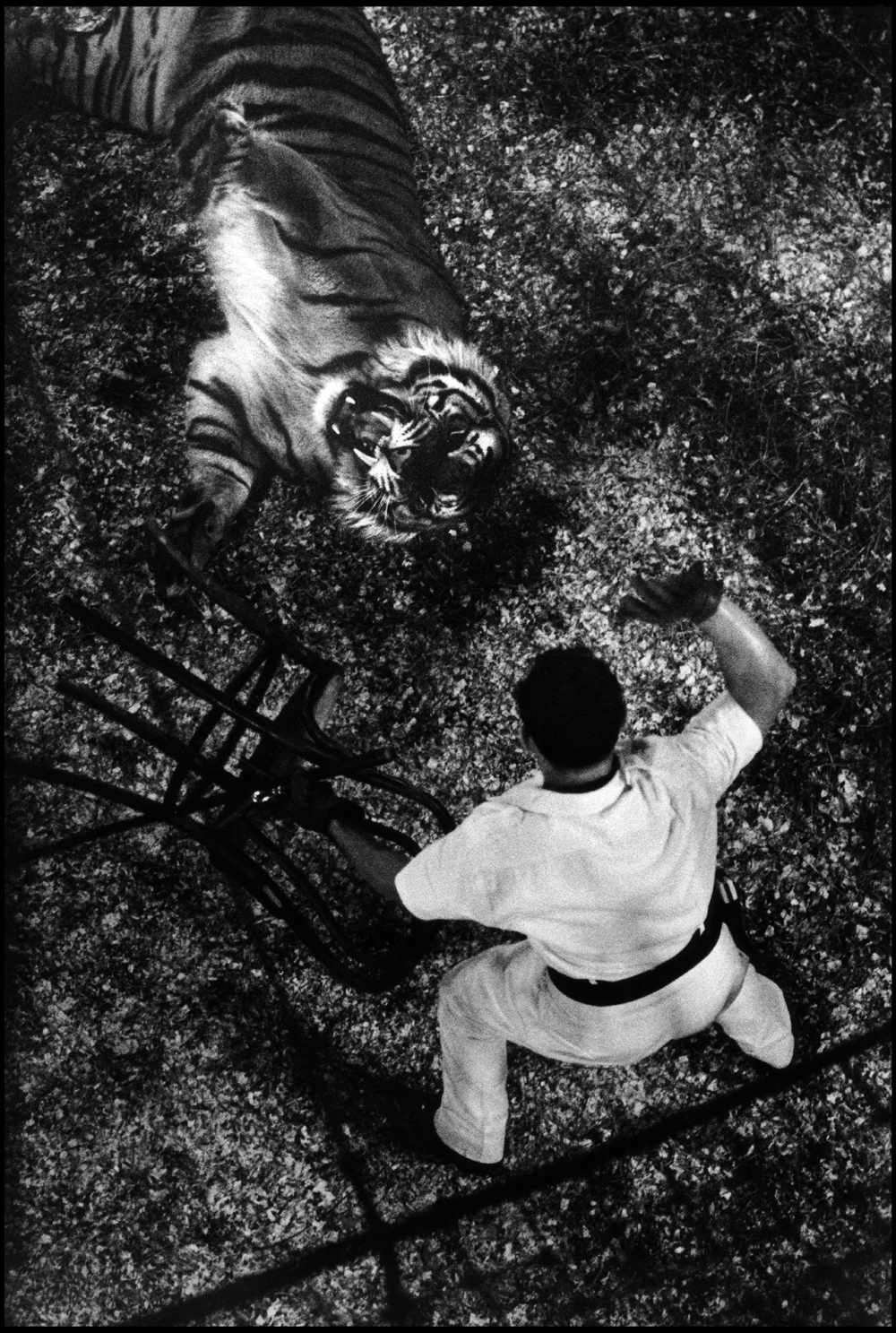
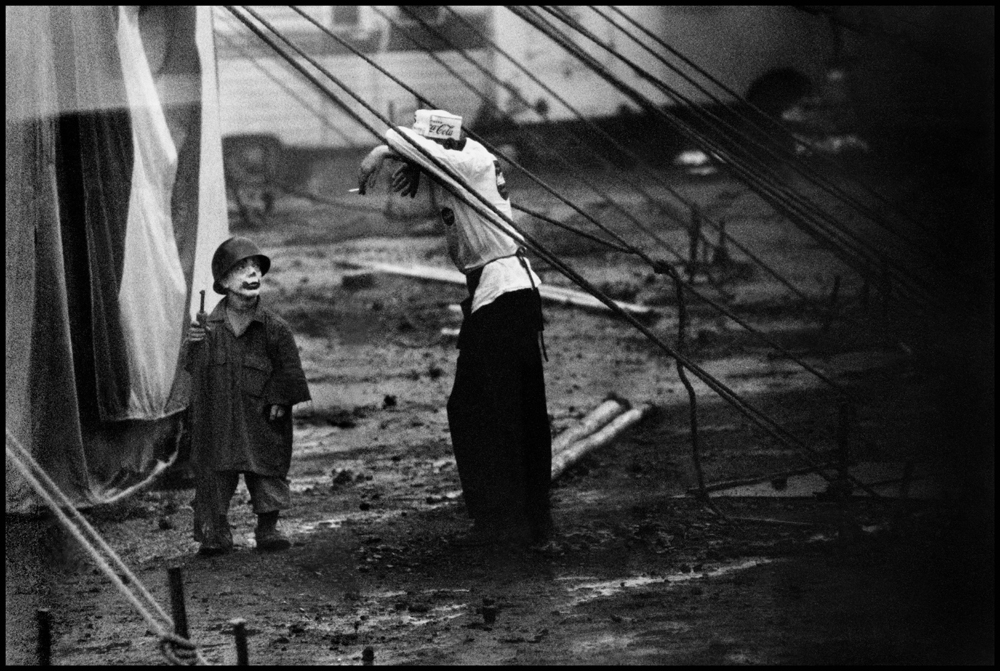
Comments (24)